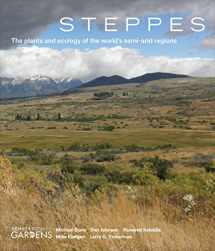
Steppes: The Plants and Ecology of the World's Semi-arid Regions
Book details
Summary
Description
Steppes—semi-arid biomes dominated by forbs, grasses, and grass-like species, and characterized by extremes of cold and heat—occupy enormous areas on four continents. Yet these ecosystems are among the least studied on our planet. Given that the birth and evolution of human beings have been so intimately interwoven with steppe regions, it is amazing that so few attempts have been made to compare and quantify the features of these regions. In this ground-breaking volume, five leading voices in horticulture—all staff members of Denver Botanic Gardens—examine the plants, climate, geology, and geography of the world’s steppes: central Asia, central and intermountain North America, Patagonia, and South Africa. Drawing upon their first-hand experience, the writers illuminate the distinctive features of each region, with a particular emphasis on the striking similarities between their floras. Each chapter includes a primer of species of horticultural interest—a rich resource for readers with an interest in steppe plants.


We would LOVE it if you could help us and other readers by reviewing the book
Book review



